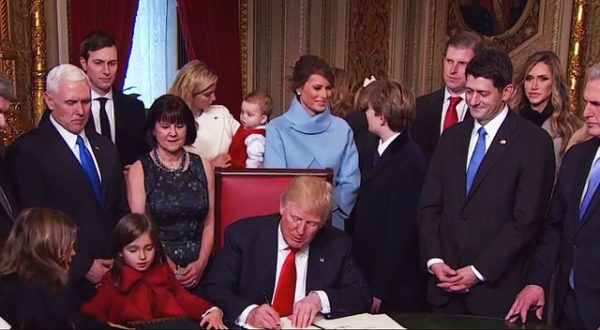
President Trump has made several high-profile picks for his cabinet, but he has one of the least diverse cabinets in recent history; there are no Latinos and very few other minorities or women. This has drawn criticism, but why is diversity a good thing for governments and other organizations? Social science research shows how diversity helps, but also how organizations often limit diversity by warping what it means to their members.
Diversity can be quite beneficial for organizations. For example, schools with a more diverse student body experience superior educational outcomes. Similarly, in business, employee racial or gender diversity predicts higher sales revenue and market share.
- Nida Denson and Mitchell J. Chang. 2009. “Racial Diversity Matters: The Impact of Diversity-Related Student Engagement and Institutional Context.” American Educational Research Journal 46(2): 322-353.
- Cedric Herring. 2009. “Does Diversity Pay?: Race, Gender, and the Business Case for Diversity.” American Sociological Review 74(2): 208-224.
White House Press Secretary Sean Spicer responded to questions regarding the lack of diversity by stating that this cabinet is diverse; it has a “diversity of thinking…diversity of ideology.” This is an example of how diversity acts as “Happy Talk,” a way people can show off their affections for modern equality without any attention to existing inequality. In short, many people talk about “diversity” in abstract ways, but avoid any real discussion of race, gender, and the like.
- Joyce Bell and Douglas Hartmann. 2007. “Diversity in Everyday Discourse: The Cultural Ambiguities and Consequences of ‘Happy Talk’“ American Sociological Review 72(6): 895-914.
This inattention toward issues of race, gender, sexuality, and other axes of oppression can take the “oomph” out of claims to diversity and misses its original intent: increasing access for marginalized groups. Ellen Berrey succinctly describes the effects of watered down, amorphous diversity as “taming demands for racial justice.” As the remaining 5,000 cabinet sub-positions are filled, pay attention to whether these selections are diverse and what kind of “diversity” they really represent.
- David Embrick. 2011. “The Diversity Ideology in the Business World: A New Oppression for a New Age.” Critical Sociology 37(5): 541-556.
- Ellen Berrey. 2015. The Enigma of Diversity. University of Chicago Press; Chicago, IL.

Comments